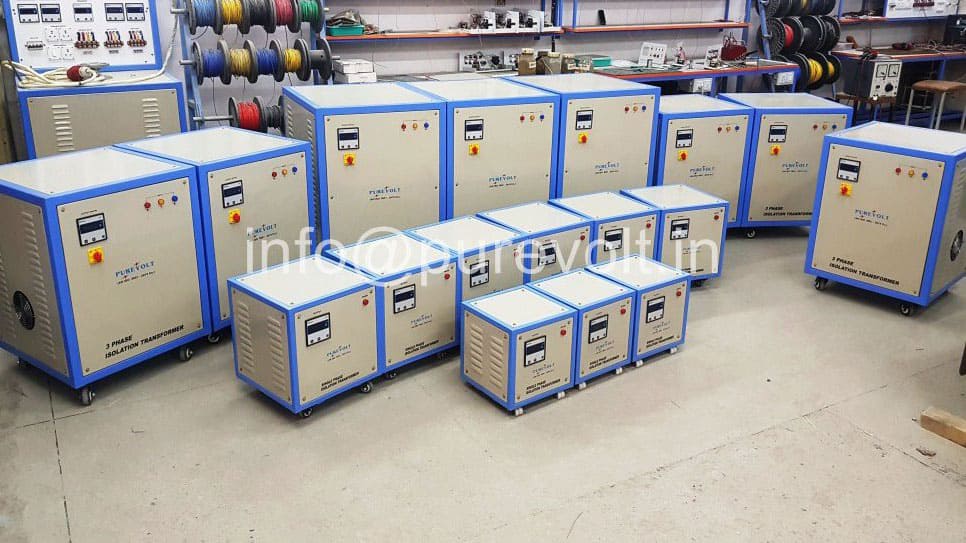Are you looking for the best servo voltage stabilizer but drowning in the ocean of options?
No worries, because you are not alone!
Picking the right servo stabilizer is like solving a complex puzzle.
It is filled with hints and cues. Here are some of the challenges you might face while choosing a servo stabilizer.
Understanding the power need:
Do you ever feel confused when it comes to your power supply requirements? You are not alone because many users don’t have clarity about their power requirements.
The first step in choosing the right servo stabilizer is to understand your requirements. With clarity, you can decide the capacity of the servo stabilizer for your specific load.
Choosing between Servo and Static Stabilizers:
It is a very old problem to decide between static and servo stabilizers. It completely depends on your needs and requirements.
A servo stabilizer uses a motor to modify a transformer to rectify the voltage fluctuations. It is reliable for many devices with its advanced technology, and it is cheaper compared to static stabilizers.
A static stabilizer uses solid-state electronics (IGBTs) to modulate voltage. It is compact, with a correction time of 20–30 ms and silent operation. It has in-built overload protection and needs no maintenance.
Dealing with voltage fluctuation:
Voltage fluctuation can be annoying and damage your devices. You need to focus on preventing the causes instead of repairing the devices.
First of all, regularly monitor the voltage. You can use a voltage metre to measure any fluctuations in your electrical supply. This will give you a clear picture of the severity of the problem.
Then contact the electricity provider so they can investigate the cause and fix the problem from their end.
Use a surge protector for sudden spikes in the voltage. You can use surge protectors for sensitive devices like TVs, computers, and home theatre devices.
Use a voltage stabilizer for more advanced devices. It regulates voltage output and provides a constant power supply to your equipment.
You can also use an uninterruptible power supply (UPS) for battery backups in case of frequent power outages.
Selecting Single-Phase or Three-Phase Stabilizers:
It all depends on the appliances you will be connecting to your power supply and the power supply.
Single-phase stabilizers are mostly suitable for home appliances and small-scale businesses. This is the most common type of power supply in residences in India. The voltage is 230 volts AC.
Whereas the three-phase stabilizers are mostly used in industrial settings, large buildings, and agriculture, The voltage is 415 volts AC.
Feature | Single-Phase Stabilizer | Three-Phase Stabilizer |
Power Supply | Single-phase (230V AC) | Three-phase (415V AC line-to-line) |
Applications | Homes, small businesses | Industrial settings, large buildings, farms (three-phase motors) |
Appliances | Refrigerators, TVs, computers, washing machines | Heavy machinery, motors, three-phase transformers |
Determining the kilovolt-ampere (KVA) Rating:
First, identify the VA ratings of your devices. Make a list of all the appliances you want to connect to the stabilizer. Look for the VA rating mentioned near the power cord of the devices.
If the rating is mentioned in Watts (W), you can calculate the VA by multiplying the Watts by 1.2 (W x 1.2 = VA). This creates a buffer for inductive loads.
Now add all the VA ratings of all the devices you want to connect to the stabilizers.
Add safety margins of 20 to 25 percent to the sum of VA ratings. Simply multiply the total VA by 1.25 to get the safety margin (total VA x 1.25 = KVA rating).
Now look at the circuit breaking rating usually mentioned on the circuit breaker panel. The panel is a metal box with levers or switches used to regulate electrical circuits in your setup area.
The current rating in amps (A) is printed on the breakers. It gives you a brief idea of how much current is allowed in the circuit.
Now multiply it with the operating voltage to get an approximate estimate of VA ratings. You can add safety margins by multiplying the ratings by 1.25.
Overload Protection:
The proper overload protection for your equipment depends on several factors.
The amperage rating of the stabilizer must match the maximum safe current your circuit can manage.
Different devices need specific response times to overloads.
Look to see what is more suitable for your setup, a reusable circuit breaker or a disposable fuse.
Maintenance requirements:
Though the stabilizer is a reliable machine, it requires some maintenance to ensure peak performance and longevity. Here are some key maintenance tasks you need to consider:
Perform regular inspections every month, especially in a dusty environment. Also, clean the machine regularly.
Check the fans and ventilation for proper cooling and smooth operation of the stabilizer.
Monitor the performance of the stabilizer by observing the voltage output. Keep an eye on the output voltage and make sure it is within the desired range.
Conclusion:
Choosing the right servo stabilizer for your setup is a tedious task, especially when there are a lot of options available on the market.
The common challenges faced by the users while choosing the servo stabilizers are: understanding the power need; choosing between servo and static Stabilizers, dealing with voltage fluctuation; selecting single-phase or three-phase Stabilizers, determining the kilovolt-ampere (KVA) rating; overload protection; and maintenance requirements.
A thorough understanding of these factors will help the user make an informed decision while purchasing a servo stabilizer.

